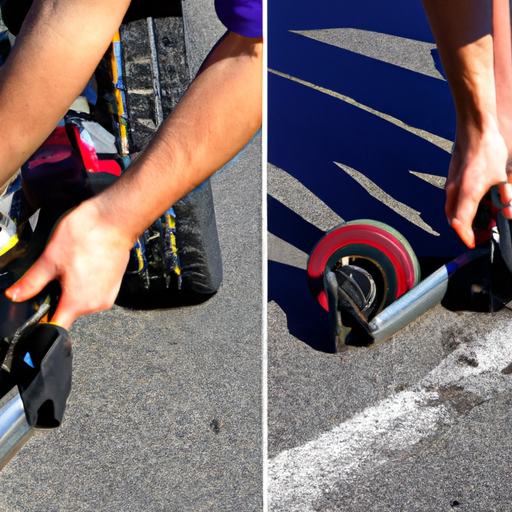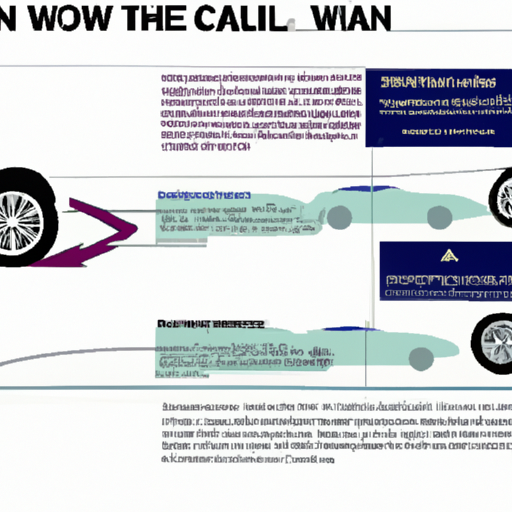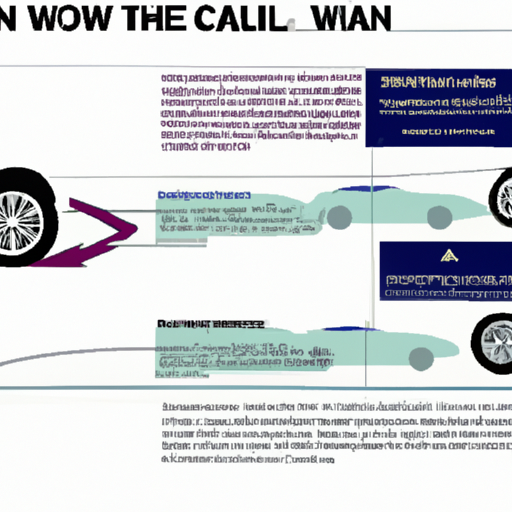In a world where every second counts, it’s important to optimize every aspect of our daily routines. But when it comes to waiting, whether it’s at a red light, a stop sign, or simply paused on a hill, have you ever wondered if there’s a better way to pass the time? This article explores the age-old question: should you turn your wheels while waiting? Join us as we uncover the pros and cons of this common practice, diving into the potential benefits and potential risks that may await you at every intersection.
Heading 1: Understanding Wheel Positioning while Waiting
Subheading 1: Importance of Wheel Positioning
When waiting in a stopped position, such as at a red light or a stop sign, the position of your wheels can play a crucial role in ensuring your safety and the safety of others on the road. Proper wheel positioning can help prevent accidents and minimize the risk of injuries. By understanding the importance of wheel positioning while waiting, you can take proactive steps to enhance your overall safety on the road.
Subheading 2: Impact of Wheel Positioning on Safety
The way your wheels are positioned while waiting can significantly impact your safety. Improper wheel positioning can make your vehicle vulnerable to unexpected events, such as rear-end collisions or rollaways. On the other hand, correct wheel positioning can provide additional stability, prevent your vehicle from rolling or drifting into traffic, and improve your ability to maneuver in emergency situations. Therefore, it is crucial to understand the impact of wheel positioning on safety and take appropriate measures to ensure your well-being on the road.
Subheading 3: Common Misconceptions about Wheel Positioning
There are various common misconceptions surrounding the practice of wheel positioning while waiting. Some believe that turning the wheels in a specific direction is unnecessary or even irrelevant. However, these misconceptions can lead to hazardous situations and compromise safety on the road. By addressing these misconceptions, we can gain a clear understanding of the correct practices and make informed decisions to maximize safety while waiting.
Heading 2: Factors to Consider
Subheading 1: Road Conditions
One essential factor to consider when determining the positioning of your wheels while waiting is the condition of the road. When waiting on a flat and level surface, such as a well-maintained road, the positioning of your wheels may differ from when you are on an incline or decline. Adjusting your wheel positioning according to the road conditions can help prevent unintentional movement and maintain stability until it is safe to proceed.
Subheading 2: Traffic Flow and Waiting Time
Another crucial consideration is the flow of traffic and the duration of your wait. If you are at the front of a line of vehicles, with no vehicle directly in front of you, turning your wheels might not be necessary. However, in congested traffic or when there is a possibility of a rear-end collision, it is advisable to turn your wheels to enhance safety. Additionally, the waiting time can also impact your decision on wheel positioning, as longer waits may warrant different precautionary measures.
Subheading 3: Type of Vehicle
The type of vehicle you are operating also plays a role in determining the appropriate wheel positioning while waiting. Depending on whether you are driving a front-wheel drive, rear-wheel drive, or all-wheel drive vehicle, the optimal position for your wheels may vary. It is crucial to consult your vehicle’s manual or seek advice from a qualified automotive professional to ensure you adopt the correct wheel positioning technique specific to your vehicle.

Heading 3: Front-Wheel Positioning
Subheading 1: Pros of Turning Front Wheels Towards the Curb
When waiting in a situation where there is a risk of your vehicle being hit from behind, turning your front wheels towards the curb can provide additional safety benefits. By positioning your wheels in this manner, if your vehicle is struck from behind, it is more likely to be redirected away from traffic and towards the curb. This can minimize the chances of your vehicle colliding with other vehicles or pedestrians, thereby reducing the severity of a potential accident.
Subheading 2: Cons of Turning Front Wheels Towards the Curb
While turning your front wheels towards the curb can offer advantages, there are also potential drawbacks to be aware of. If your front wheels are turned too sharply towards the curb, it can restrict your ability to quickly maneuver out of a potentially dangerous situation. Additionally, if the curb has a sharp edge or is poorly maintained, it may cause damage to your tires or wheels. Therefore, it is essential to strike a balance and ensure your front wheels are turned to a safe angle that allows for both stability and maneuverability.
Subheading 3: Alternatives to Turning Front Wheels Towards the Curb
If you are uncomfortable with turning your front wheels towards the curb, there are alternative measures you can take to enhance safety while waiting. One alternative is to keep your wheels straight, particularly in situations where there is minimal risk of being hit from behind. This allows for easier maneuverability in case you need to quickly move out of the way or make an evasive maneuver. Another alternative is to turn your front wheels away from the curb, especially when waiting on an incline. This can prevent your vehicle from rolling backward and potentially causing a collision.
Heading 4: Rear-Wheel Positioning
Subheading 1: Pros of Turning Rear Wheels towards the Curb
Turning your rear wheels towards the curb while waiting can be beneficial in situations where there is a possibility of your vehicle rolling forward. By positioning your rear wheels in this manner, your vehicle’s natural tendency is to roll into the curb, reducing the risk of it moving forward. This can be particularly important when waiting on an incline, where the force of gravity may cause your vehicle to creep forward.
Subheading 2: Cons of Turning Rear Wheels towards the Curb
While turning your rear wheels towards the curb can aid in preventing forward movement, it is essential to consider potential drawbacks. If your rear wheels are turned at an extreme angle, it can limit your ability to exit a parking space or maneuver in tight spaces. Additionally, it is crucial to ensure that there are no obstructions, such as curbs or objects, that may cause damage to your tires or wheels when your vehicle rolls backward.
Subheading 3: Alternatives to Turning Rear Wheels towards the Curb
If turning your rear wheels towards the curb is not a viable option or if you are uncomfortable with this technique, there are alternatives worth considering. Keeping your rear wheels straight is a suitable alternative when waiting on level ground or when the risk of rolling forward is minimal. This allows for greater maneuverability and ease of movement when you are ready to proceed. Another alternative is to use the parking brake to prevent both forward and backward movement, especially in situations where you anticipate a more extended wait or when parked on a significant incline.

Heading 5: Legal and Regional Considerations
Subheading 1: Local Traffic Laws and Regulations
When it comes to wheel positioning while waiting, it is important to adhere to local traffic laws and regulations. Different jurisdictions may have specific requirements or recommendations regarding wheel positioning. Familiarizing yourself with these laws and regulations and following them accordingly helps ensure that you are in compliance and contributing to overall road safety within your region.
Subheading 2: Differences in Recommendations Based on Geography
It is worth noting that recommendations regarding wheel positioning while waiting may vary depending on the geographic location. Factors such as weather conditions, road design, and average traffic volume can influence the recommended practices. Therefore, it is valuable to seek guidance from local driving authorities or consult local resources to understand the region-specific recommendations.
Subheading 3: Any Specific Regional Requirements
Certain regions may have specific requirements regarding wheel positioning while waiting. For example, in some jurisdictions, there may be regulations regarding the angle at which the wheels should be turned. It is crucial to familiarize yourself with any specific regional requirements and ensure compliance to avoid penalties and enhance overall safety.
Heading 6: Emergency Situations
Subheading 1: Wheel Positioning in Emergency Stops
In emergency situations, such as sudden braking or a vehicle malfunction, the positioning of your wheels can impact your ability to safely navigate the situation. In the event of an emergency stop, it is generally recommended to keep your wheels straight. This allows for greater control and stability, minimizing the risk of your vehicle veering off course or losing control during a sudden stop.
Subheading 2: Impact of Wheel Positioning on Towing or Recovery Operations
Proper wheel positioning is also crucial when it comes to towing or recovery operations. If your vehicle needs to be moved by a tow truck or other recovery equipment, the position of your wheels can affect the ease and safety of the operation. By following the instructions of the towing or recovery professionals and ensuring your wheels are positioned correctly, you can contribute to a smoother and safer towing or recovery process.
Subheading 3: Safe Practices in Unforeseen Circumstances
Unforeseen circumstances can arise while waiting, such as unexpected emergencies or dangerous situations. In such cases, it is essential to prioritize your safety and the safety of others. If you find yourself in an unforeseen circumstance, assess the situation and act accordingly. This may involve adjusting your wheel positioning, turning on hazard lights, or seeking assistance from law enforcement or emergency services. Always prioritize personal safety and follow the appropriate protocols in these situations.

Heading 7: Maintenance and Tire Wear
Subheading 1: Effects of Wheel Positioning on Tire Wear
The positioning of your wheels while waiting can also have an impact on the wear and tear of your tires. Incorrect wheel positioning can lead to uneven tire wear, affecting your vehicle’s performance and potentially compromising safety. By maintaining proper wheel alignment and regularly inspecting your tires for signs of abnormal wear, you can address any issues promptly and ensure optimal tire performance.
Subheading 2: Regular Maintenance to Ensure Proper Wheel Alignment
To maintain proper wheel positioning, it is crucial to prioritize regular vehicle maintenance. This includes scheduling regular wheel alignments and inspections with a qualified professional. By regularly checking and adjusting the alignment of your wheels, you can optimize overall vehicle performance, enhance safety, and prevent premature wear on your tires.
Subheading 3: Impact of Wheel Positioning on Vehicle Health
In addition to tire wear, improper wheel positioning while waiting can impact the overall health and performance of your vehicle. Misaligned wheels can place unnecessary stress on various components, such as suspension and steering systems. Over time, this can lead to premature wear and potential mechanical issues. By adopting correct wheel positioning techniques and prioritizing regular maintenance, you can help extend the lifespan of your vehicle and avoid costly repairs.
Heading 8: Expert Opinions and Studies
Subheading 1: Research on the Advantages of Wheel Positioning
Numerous studies and research have been conducted on the advantages of proper wheel positioning while waiting. These studies have consistently demonstrated the positive impact of correct wheel positioning on vehicle safety and accident prevention. By aligning your wheels appropriately, you can significantly reduce the risk of accidents, injuries, and damage to your vehicle.
Subheading 2: Opinions from Automotive Professionals
Automotive professionals, including mechanics and driving instructors, often emphasize the importance of wheel positioning while waiting. Their firsthand experience and expertise make them valuable sources of guidance and advice. Consulting with these professionals can help address any doubts or concerns you may have and provide practical tips for maintaining proper wheel positioning.
Subheading 3: Current Guidelines and Industry Standards
Industry organizations and governmental agencies establish guidelines and standards relating to wheel positioning and road safety. These guidelines are based on extensive research, expert opinions, and statistical analyses of accidents and driving behaviors. By following current guidelines and adhering to industry standards, you can make informed decisions regarding wheel positioning and contribute to a safer road environment.

Heading 9: Consideration for Different Road Users
Subheading 1: Pedestrian Safety and Wheel Positioning
In addition to considering the safety of the vehicle occupants, it is crucial to take into account the safety of pedestrians. Proper wheel positioning while waiting can help create a safer environment for pedestrians by minimizing the risk of accidents or collisions. By adopting appropriate wheel positioning techniques, you can enhance pedestrian safety and contribute to creating a more pedestrian-friendly road culture.
Subheading 2: Cyclist Safety and Wheel Positioning
Similar to pedestrians, the safety of cyclists is another important consideration. By positioning your wheels correctly while waiting, you can help create a safer environment for cyclists. Taking precautions, such as turning your wheels towards the curb or keeping them straight, ensures that cyclists have sufficient space to maneuver and minimizes the risk of accidents involving bicycles.
Subheading 3: Impact on Other Vehicles Sharing the Road
Proper wheel positioning while waiting not only ensures your own safety but also has an impact on other vehicles sharing the road. By adopting safe wheel positioning practices, you can prevent unintended movements or collisions that may affect other vehicles. By being mindful of the positioning of your wheels, you can contribute to overall road safety and promote harmony among different road users.
Heading 10: Summary and Conclusion
Subheading 1: Key Takeaways
Understanding and practicing proper wheel positioning while waiting is crucial for overall road safety. Key takeaways from this comprehensive article include the importance of wheel positioning, the impact on safety, and common misconceptions to avoid. It is also essential to consider factors such as road conditions, traffic flow, and the type of vehicle when determining the appropriate wheel positioning technique.
Subheading 2: Factors to Consider
Factors to consider when deciding on wheel positioning include road conditions, traffic flow, waiting time, and the type of vehicle you are operating. By taking these factors into account, you can adopt the most suitable wheel positioning technique for the given situation.
Subheading 3: Final Recommendations
Based on the information presented, final recommendations for wheel positioning while waiting will vary depending on the specific circumstances. However, it is generally advised to turn front wheels towards the curb when there is a risk of being hit from behind and turn rear wheels towards the curb on inclines to prevent forward movement. Keeping wheels straight or utilizing the parking brake are also valid alternatives in certain situations. It is essential to remain cognizant of local traffic laws, regulations, and any specific regional requirements regarding wheel positioning.
By implementing proper wheel positioning techniques, you can significantly enhance your safety, improve the overall road environment, and contribute to a safer driving experience for all road users. Remember to prioritize regular vehicle maintenance, be mindful of the wear and tear on your tires, and seek professional guidance when necessary. Safe wheel positioning is just one aspect of responsible driving, but it is undoubtedly a critical one. Stay informed, stay aware, and prioritize the safety of yourself and others on the road.


